Best road bike saddles 2025: Comfortable bike saddles reviewed and recommended
The best road bike saddles will make your riding a joy, while those that fall short can be a huge detriment to your comfort

Saddles can make or break your ride. Even the best fitting road bike won’t feel right if the saddle isn’t suited to your body. Regardless of whether you're a casual weekend rider or a daily commuter, getting the right fit is crucial and can save you from more than just mild discomfort.
Finding the best road bike saddle is easier said than done in a market saturated with different options. That’s why we've tested a wide range of saddles, from short-nose racing options to comfort-focused designs, including the best picks for men and the best women's road bike saddles too. If you're an avid gravel rider, be sure to check out our guide on the best gravel bike saddles as well.
We’ve tried, tested and reviewed dozens of models hands-on, covering a variety of shapes, widths, padding types, and price points. Our top recommendation is the Fizik Vento Argo R1 Adaptive, which stood out to us in testing as a fantastic all-rounder—offering comfort, tech and versatility.
There's plenty more of our top picks too which excel in their own categories. If you're not sure what kind of saddle you need, scroll to the bottom for our How to Choose and FAQ sections where we explain sizing, pressure relief, rail types, and more. After you've found the right saddle for your needs, why not pair it with one of the best saddle bags we've tested.
Quick list

We think the Fizik Vento Argo R1 Adaptive is a fantastic all-rounder. It offers excellent support, comfort, and a short design that suits most riders.
Read more below

The Cadex Boost is a great choice for riders looking for a lightweight, short-nose saddle that provides a locked-in, powerful pedalling position. Sure, it's pricey and only available in one width but we think it's worth it for the performance and comfort on offer.
Read more below

If you're looking for immediate comfort and a supportive fit, then Novus Boost Evo Kit Carbonio Superflow could be for you. We particularly enjoyed it's wide cut-out and long rails, lightweight build and durable finish—though it is on the pricier side.
Read more below
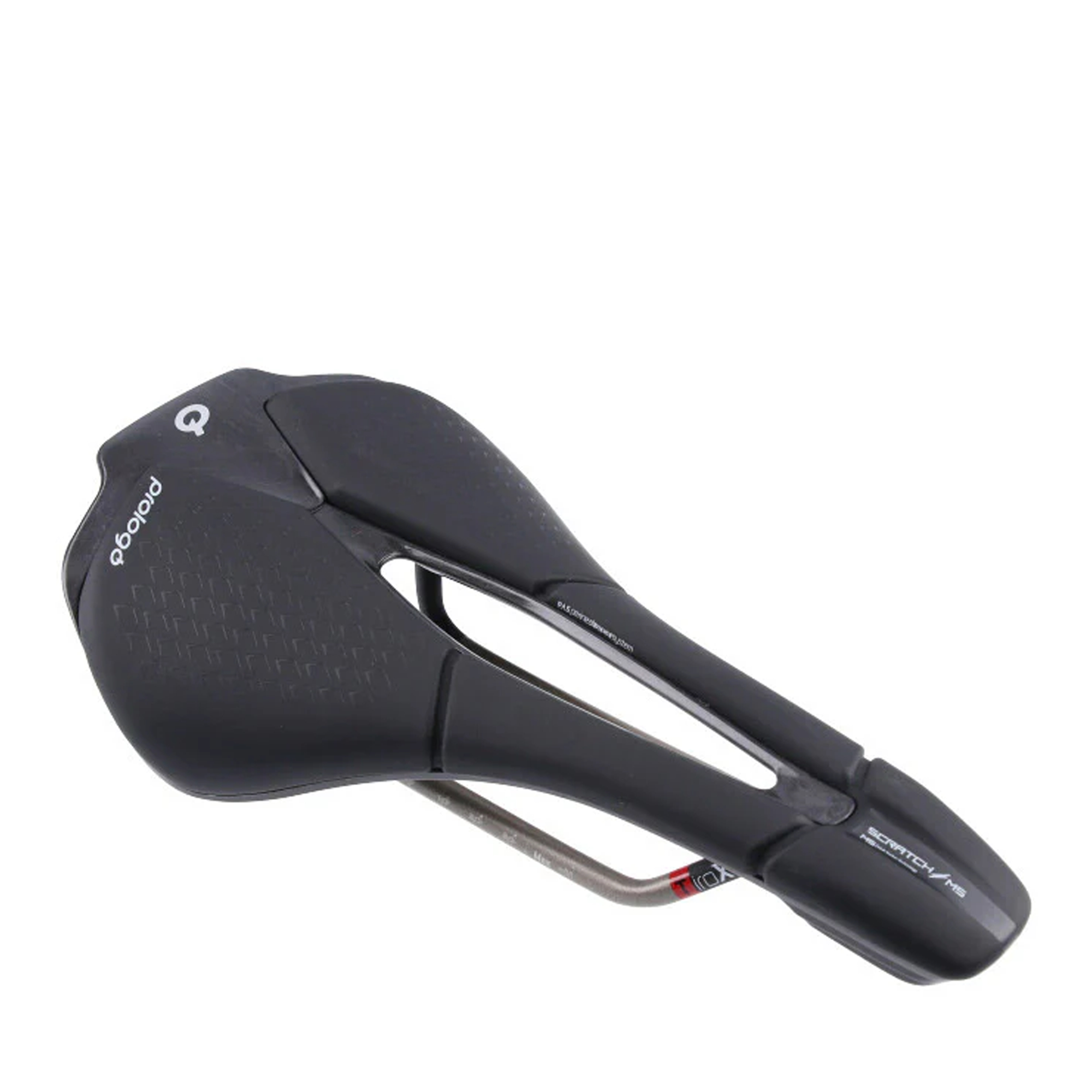
The Prologo Scratch M5 PAS is a versatile saddle offering all-day comfort and a rounded profile and segmented foam that supports a range of riding positions. We found it was a tad heavier than advertised but we still think the vibration damping and its stability make it this great option for road and gravel.
Read more below
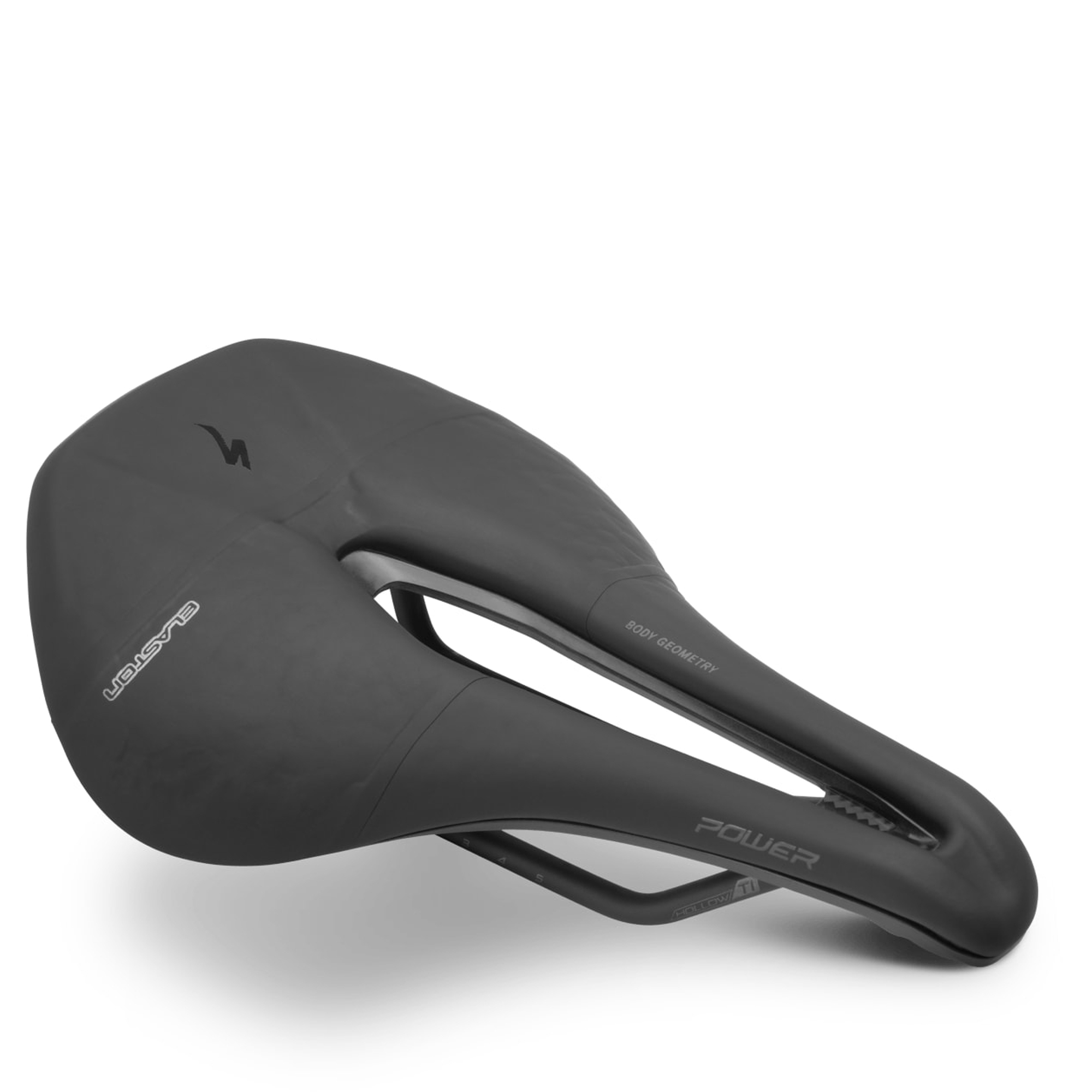
We think riders looking for a short-nose saddle with a wide cut-out and plush comfort will love the Power Pro Elaston. The padding is simultaneously soft and supportive feel. While it was initially designed as a women's saddle, it works well for both sexes and particularly those maintain an aggressive riding position on road bikes.
Read more below

The introduction of 3D-printed saddle technology has opened up a world of customisation possibilities. Posedla Joyseat saddle offers a complete custom saddle that's shaped to work specifically with your butt.
Last updated on 26th March 2025
This guide was updated on 26th March 2025 to ensure all of road bike saddles featured in the guide were current and available. A quick list section was added to help readers navigate and find products with easy. Introductions, product descriptions and specifications were tweaked to stay concise and up-to-date
Best road bike saddles
Best road bike saddle
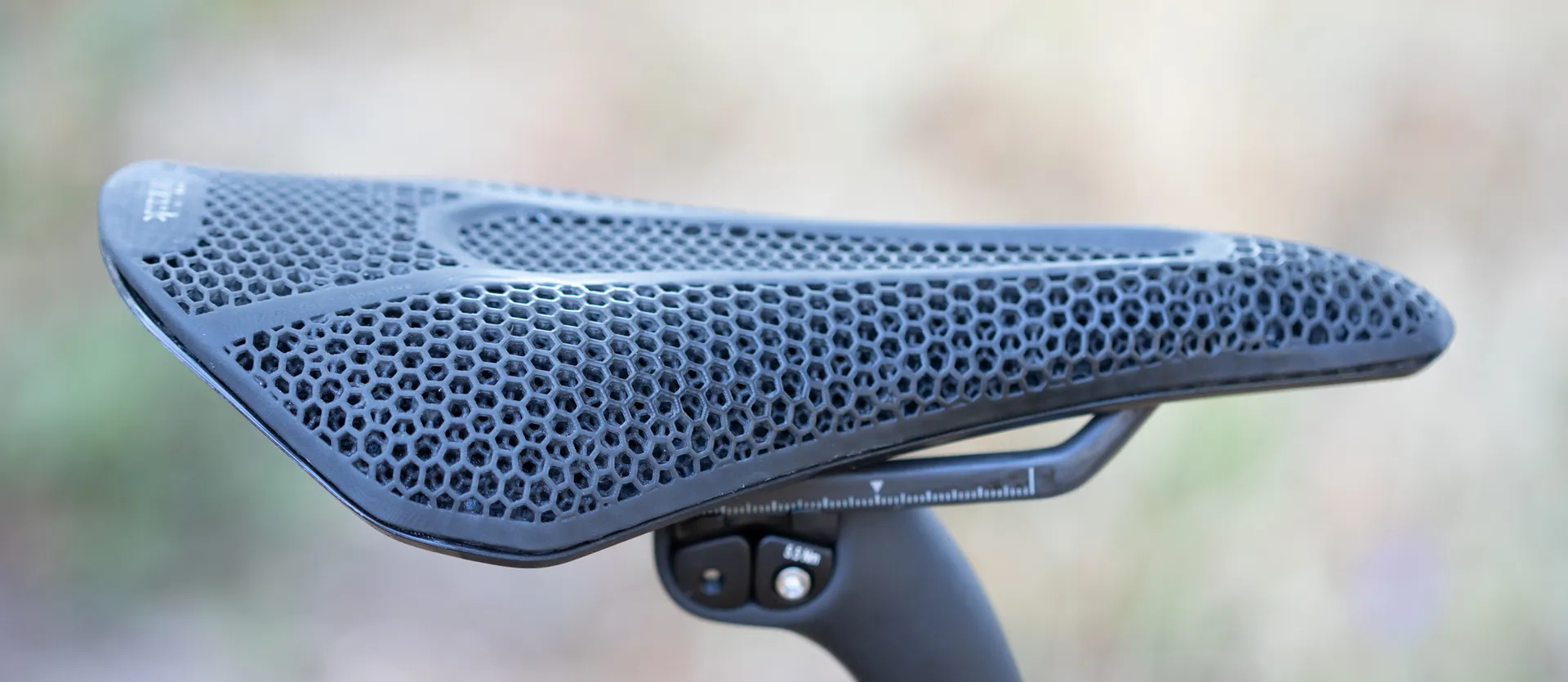
Specifications
Reasons to buy
Reasons to avoid
✅ You want a comfortable, high-performance saddle: The Vento Argo R1 Adaptive is softer and more adaptable than traditional performance saddles and offers with multi-density padding for targeted support.
✅ You like freedom to move around on the saddle: The Argo shape offers plenty of room to reposition your sit bones without losing comfort.
❌ You need compatibility with standard seatposts: The non-standard 7x10mm carbon rails can limit compatibility with many seatpost clamps.
Although 3D printed saddles haven't yet taken over the market like short nose saddles have, they're starting to gain traction in the high-end market as second-generation designs—such as the Vento Argo R1 Adaptive—address earlier limitations. Naturally, we were keen to get our hands on the Vento Argo R1 Adaptive and put it to the test...
Right away, it was clear that the Vento Argo R1 Adaptive is a major upgrade from its predecessor. Fizik's partner, Carbon, improved the manufacturing process which allows for multiple densities throughout the saddle. The result is a saddle with softer support in the areas where you typically need relief and firmer areas for stability. No need for a cutout. In testing, we found this delivered remarkable verstatility; it was stiff and comfortable when you want to hammer but also comfortable on recovery rides.
In terms of value, it's less expensive than Specialized Power with Mirror technology for the same 190 grams and carbon rails. Crucially, we also found it was a lot easier to clean than some of the other 3D models we'd tested. Aesthetics-wise, this saddle definitely catches the eye and has an unmistakable '3D printed' look to it.
Our only qualm was the rails. There are very few seat posts that can fit a 7x10mm rail. Typically, carbon saddles use a 7x9 rail and most brands have adapters for that size or use a clamping style that doesn't care. Working with 7x10 is very difficult and both the Orbea Orca Aero and Look 795 Blade RS we had available in testing were not compatible.
Check out our full Fizik Vento Argo R1 Adaptive saddle review for more information.
Best performance
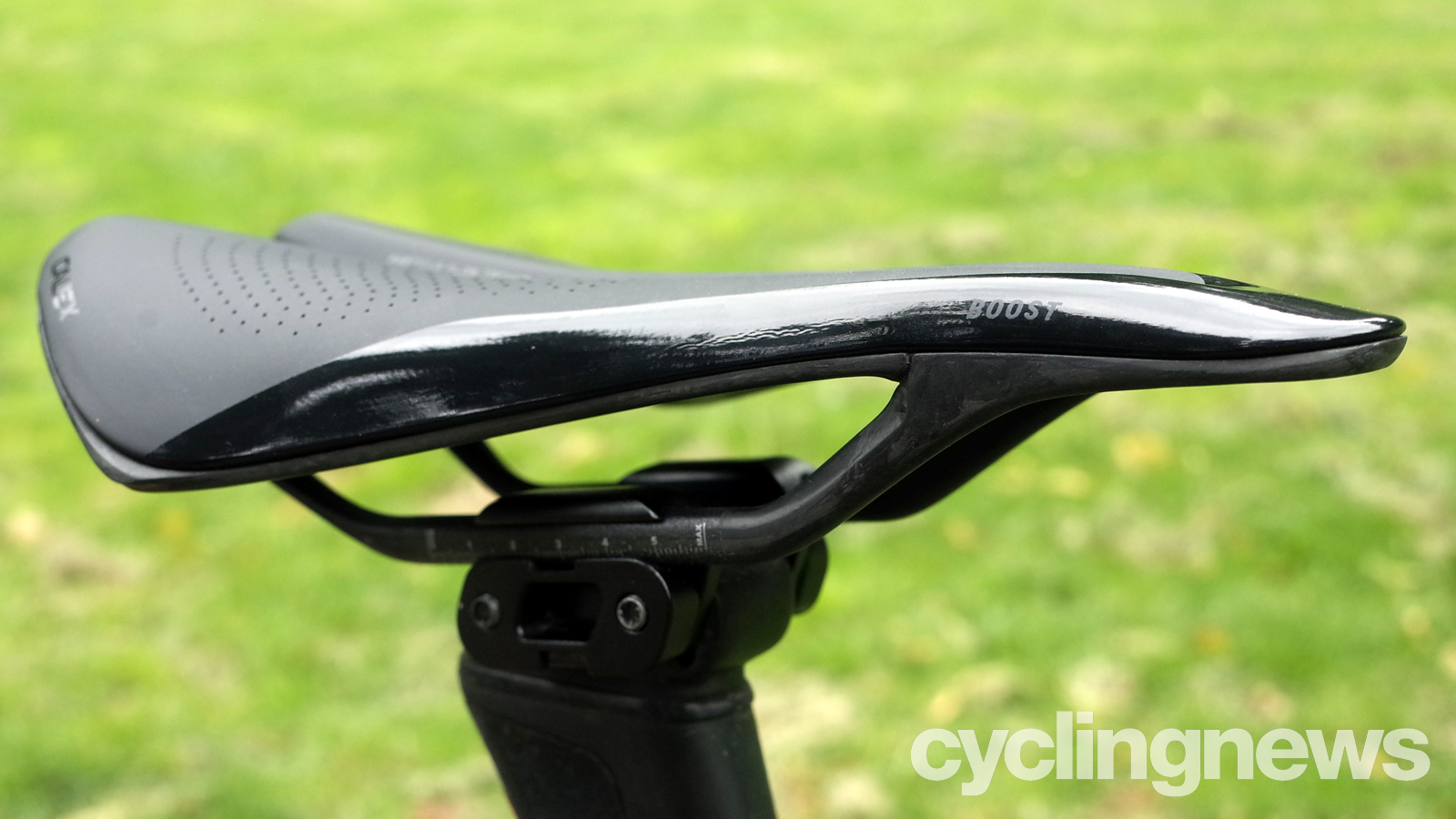
Specifications
Reasons to buy
Reasons to avoid
✅ You want a lightweight, high-performance saddle: Weighing just 141g, the Cadex Boost is incredibly light due to its advanced rail and two-piece construction.
✅ You value premium comfort: ETPU-padded areas and EVA foam provide exceptional support and pressure relief.
❌ You need multiple size options: The Cadex is only available in one width (149mm), which may not suit everyone.
❌ You’re on a budget: Its premium features do come with a premium price tag typical of high-end, performance-focused components.
Cadex can often go unnoticed as a mere OEM brand in the shadow of bike behemoth Giant. The reality is that Cadex produces high-end componentry used by the likes of Team CCC in the WorldTour.
In terms of design, the overall shape of the Cadex Boost definitely curves a bit more than more uniform saddle structures like the Specialized Power Pro and Prologo Scratch M5. In testing, we found this provided an even level of support that we found comfortable and easy to settle into. Then there's the raised rear end which encourages you to shuffle forward into a more aggressive riding position. This, paired with the concave transition onto the saddle's shoulder,s means greater power can be transferred to the pedals.
We found the ETPU-particle-padded areas remarkably comfortable in testing and there was no sign of potential discomfort for longer rides. While the Boost is only available in one size and 149mm might be a tad wide for some, we had zero issues with set-up and found a slight elevation of the nose to offer a comfortable riding position. All in all, we think this is a fantastic contender for riders looking for a premium performance saddle.
Read our full Cadex Boost saddle review to find out more.
Best Comfort
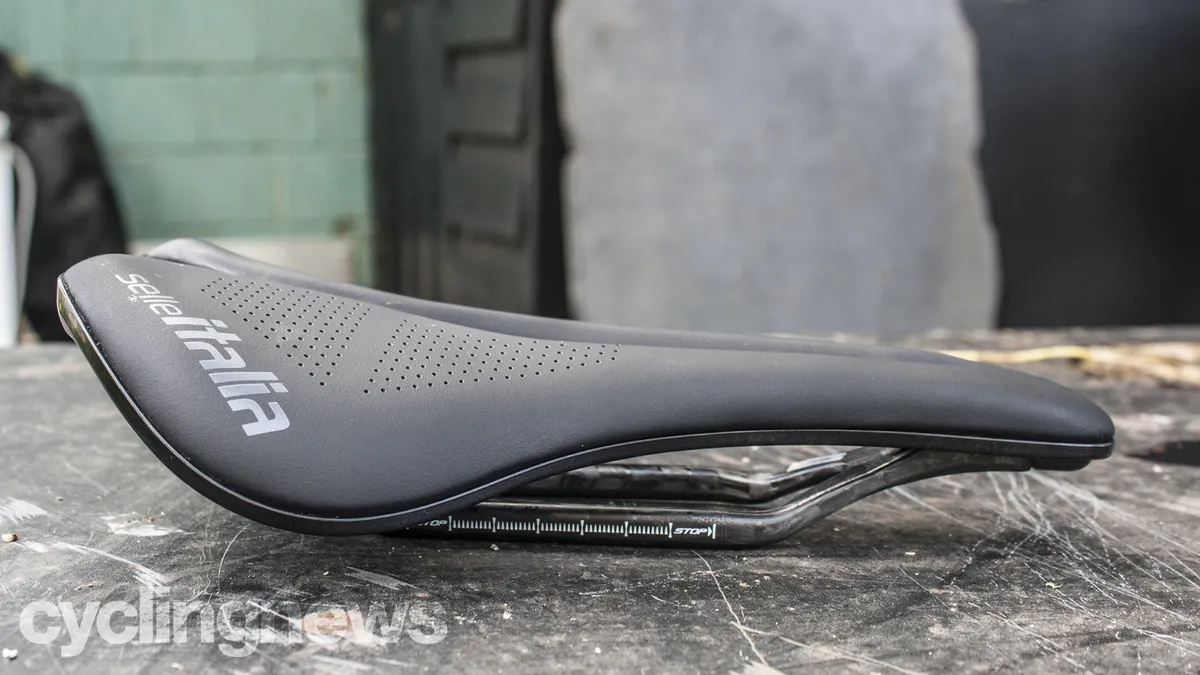
Specifications
Reasons to buy
Reasons to avoid
✅ You have a posterior pelvic tilt: The wave-shaped profile is designed to support riders with rotated pelvis positions.
✅ You want a blend of comfort and performance: The waved design and central channel offer excellent pressure relief and ergonomic support.
❌ You’re on a tight budget: It's definitely a premium-priced saddle.
With over a century of experience, Selle Italia needs no introduction. Since launching the Novus family of saddles in 1994, the Italian brand has continued to evolve saddle designs to deliver superb comfort and performance. The Novus Boost Evo Kit Carbonio Superflow continues in that vein and has been designed to accommodate the nuances that affect rear pelvic rotation.
In testing, we were blown away by how well the saddle blends comfort and performance. The Novus Boost Evo Kit Carbonio features a 'waved' padding design and a large central channel to help dissipate pressure. As you can see from a side angle, the saddle takes on a slightly convex profile, which dips and rises again towards the rear. All of this combined makes for an ideal option for cyclists struggling with high pelvic rotation.
In terms of spec, the Novus Boost Evo Kit Carbonio Superflow is only available in one size only with dimensions of 145 x 248mm. Sure, it's not the widest saddle available but the flank curvature or 'wave' design provides ample support for the ischial bones of most individuals. At 163g, it's fairly light too thanks to TeXtreme carbon rails, a composite base and central cutout which look awesome .
At £220 / €243.60, it is definitely on the pricier side of the spectrum. But it's definitely worth considering this an investment in top-tier comfort, ergonomics and performance.
Read our full Selle Italia Novus Boost Evo Kit Carbonio Superflow saddle review here.
Best versatility
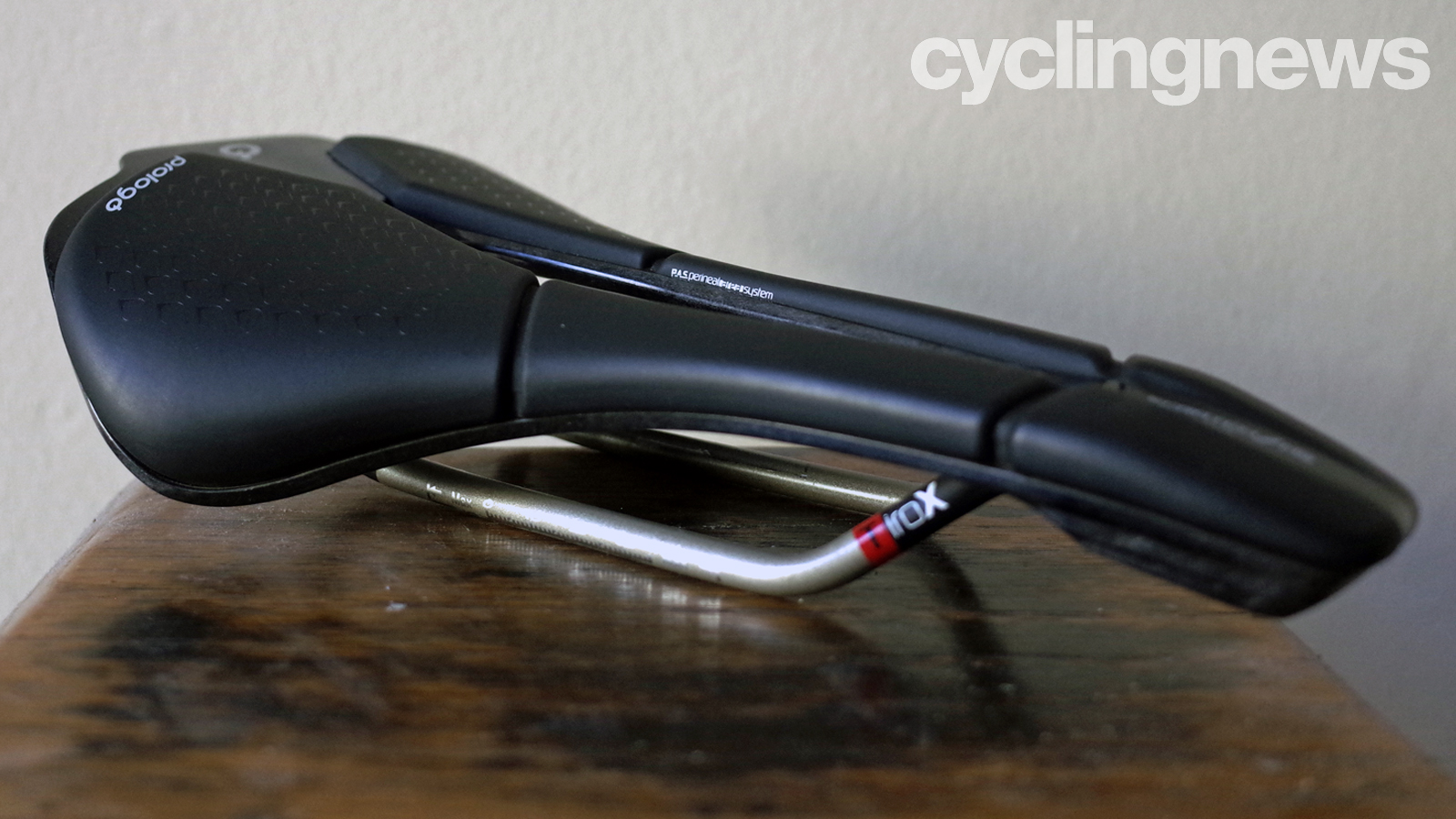
Specifications
Reasons to buy
Reasons to avoid
✅ You ride across disciplines: Suitable for endurance, road, and gravel riding thanks to its adaptable design.
✅ You want a versatile, all-day comfort saddle: Offers a wide range of comfortable positions for varying intensities and ride types
❌ You’re concerned about weight: Heavier than advertised, which may be a downside for weight-focused riders.
The Scratch M5 series is part of Prologo’s 2020 range and follows the trend of short nose saddles. It's designed to suit a range of cycling disciplines, including off-road and TT/triathlon. We put the Scratch M5 to the test to see what it's capable of...
In testing, we found the rounded profile combined with the MSS padding was comfortable on different rides from short hour-long training rides to longer six-hour epics. When nosing off the front, there was plenty of freedom for pedalling and the shoulders gave a secure locked-in feeling when sitting towards the rear of the saddle for climbing. Vibrations felt dampened and evenly distributed across the saddle rather than focused on a single point.
While some saddles require some tweaking to find their sweet spot, we found the Prologo Scratch M5 to be comfortable right out of the box. In a flat orientation, the saddle accommodates a range of seated positions. We found it easy to settle into the desired orientation without much thought. Overall, we think this is an impressively versatile saddle and would recommend it for both endurance and gravel riding.
For more information, check out our full Prologo Scratch M5 PAS review.
Best Storage Compatibility

Specifications
Reasons to buy
Reasons to avoid
✅ You value integrated features: SWAT-compatible mounts offer neat storage options.
✅ You want effective pressure relief: The large central cut-out is highly effective at reducing perineal pressure.
❌ You prefer more contoured or curved saddles: The flatter design may not suit all anatomies or riding styles.
Many saddles are becoming shorter and shorter and Specialized has been at the forefront of this trend with its Power range of saddles. The Power Pro Elaston's stumpy nose, wide shoulders and huge cut out is easily recognisable and will definitely suit those who like to ride in the drops.
The Power Pro Elaston's wide cut out will suit any gender and the Elaston padding will offer improved comfort over standard foam. The model we tested uses Specialized’s level 2 padding which has a slim profile and feels very soft at the nose and progressively firmer towards the rear. We found the wider cut does a good job of moving pressure away from soft, sensitive tissue and avoids a loss of blood flow. That said, when our tech writer Graham tested the saddle he had some difficulties finding the optimal position for comfort, although after speaking to other riders, it seems like he is in the minority with many finding it extremely comfortable.
In terms of design, the Power Pro Elaston's FACT carbon body is tuned to offer more flexibility or stiffness where required with flexible shoulders. There are even moulded crew mounts on the base to mount their SWAT storage system, giving added storage options for carrying road essentials or extra hydration. We'd recommend this for any rider who relies on extra saddle storage mounts and already owns one of Specialized's SWAT storage mounts.
Head over to our full Specialized Power Pro Elaston saddle review for more details.
Best Tech

Specifications
Reasons to buy
Reasons to avoid
✅ You want a truly custom fit: At-home moulding ensures the saddle matches your exact sit bone shape and dimensions.
✅ You value long-ride comfort: Exceptionally soft nose and tailored padding deliver hotspot-free performance, even on ultra-endurance rides.
❌ You’re on a tight budget: Premium pricing reflects the custom build and production.
It's not just Specialized that has leveraged 3D printing technology—Posedla is a small Czech brand that now offers handmade saddles that are 3D printed to your body. Not only did we test the Joyseat but we even visited the Posdela factory to discover what was going on in the manufacturing process.
In terms of design, the optional colours are rich and beautiful and the carbon base is a handmade piece of art. Aesthetically, we thought the 3D printing of the Sella San Marco had slightly more visual appeal but that's a subjective detail at the end of the day.
We tested the Joyseat on a 370 km / 230 miles ride from Prague to Vienna. It's safe to say the custom, 3D printed fit delivered as our tester didn't experience any numbness or discomfort, even in a TT position it felt locked in with no need to shift weight while riding. The padding of the Joyseat is essentially a "U" shape. Starting at each rear corner, it comes to the front and follows the shape of the centre cutout before ending at the opposite rear corner. In the rear, behind the cutout is a depression with a bit of plastic replacing the padding.
We'd recommend the Joyseat if you're a fan of innovative saddle tech and have the money to invest in a handcrafted saddle. Interested in heading down the custom route? Check out or review of the Posdela Joyseat.
Also consider
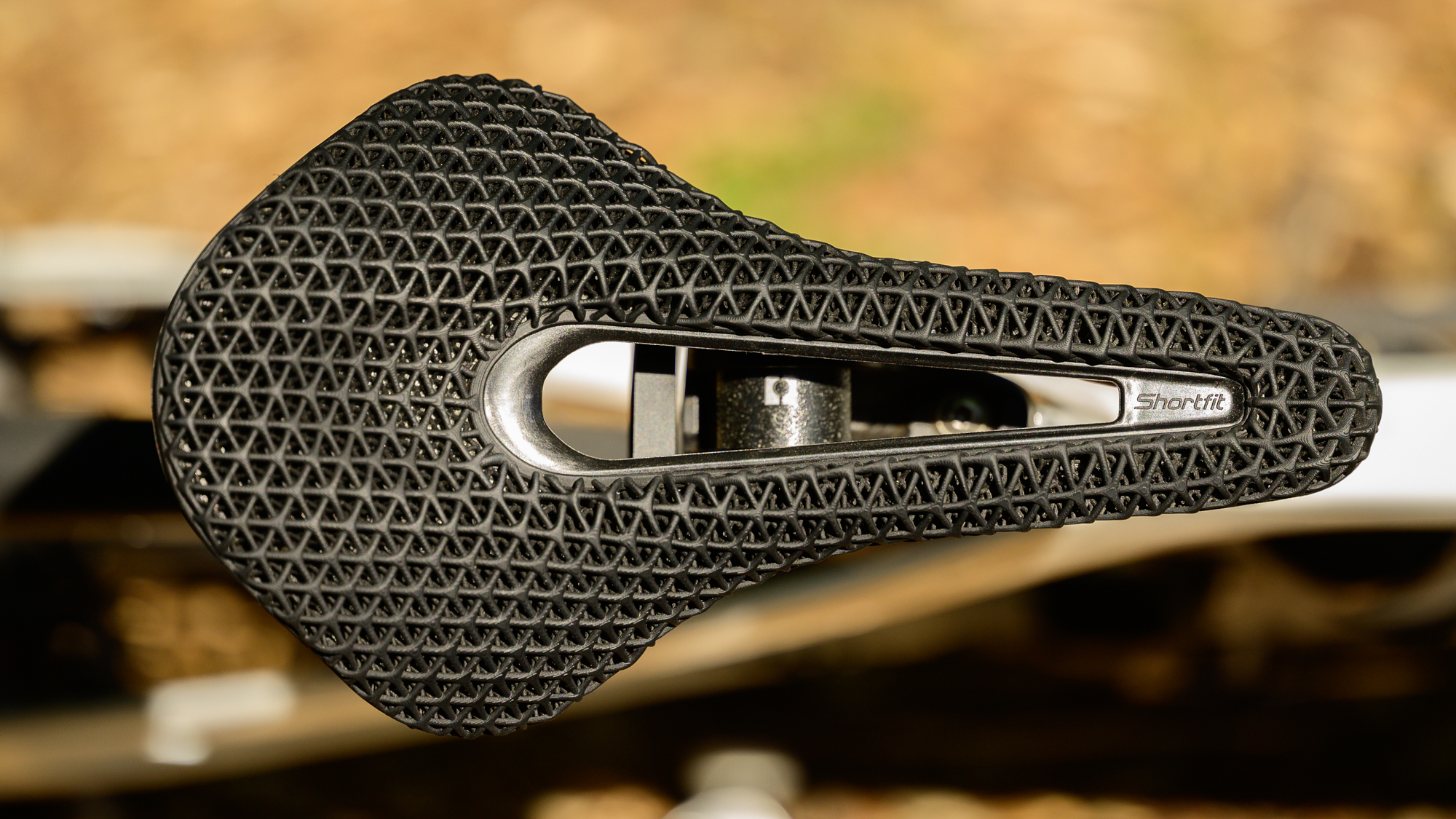
Specifications
Reasons to buy
Reasons to avoid
✅ You prefer pressure relief and support: The large central cutout and well-tuned 3D-printed padding offer comfort on long rides.
✅ You value modern tech and precise comfort: 3D printing allows for targeted cushioning that enhances the saddle’s feel without chafing.
❌ You’re on a budget: The 3D-printed version is expensive, even before upgrading to carbon rails.
❌ You want premium feel throughout: The base model’s stainless rails and nylon shell don’t visually match the premium upper.
Selle San Marco has thrown its hat into the 3D-printed saddle ring with the Shortfit 2.0 3D Racing Saddle. After spending time on the S3 version, we can confidently say it deserves attention.
Aesthetically, other brands have opted for subtler outer designs, Selle San Marco leans into the 3D-printed aesthetic. You get a bold, starburst-like pattern that proudly shows off the layers of the printed matrix. The shape itself features a noticeable rear kick and a subtle wave through the midsection, which helps lock you into a stable position without feeling overly restrictive. In testing, we appreciated this on both short and longer rides.
If you prefer a wider saddle, there's also the L3 version at 155mm. Both sizes are available with carbon rails, and honestly, if you’re already spending this much on a saddle, the small upgrade to carbon is worth it. It not only drops some weight but brings the build quality of the base up to the same standard as the excellent upper. Our only qualm was that the stainless steel rails and nylon shell on the non-carbon model don’t quite match the premium look and feel of the upper. That said, it’s a relatively minor quibble, and again, upgrading to carbon solves this neatly.
We’d recommend the Selle San Marco Shortfit 2.0 3D if you’re a smaller rider looking for a narrow, supportive saddle with the comfort-enhancing benefits of 3D-printed tech. Plus, if you've got the budget, we'd absolutely suggest you upgrade to the carbon version.
Read our full Selle San Marco Shortfit 2.0 3D review.

8. Selle SMP Well
Specifications
Reasons to buy
Reasons to avoid
✅ You value a stable and ergonomic riding position: The pronounced curve keeps you planted while allowing pelvic rotation for optimal comfort.
✅ You’re looking for proven bike fit support: Widely recommended by bike fitters for riders with specific ergonomic needs.
❌ You prefer traditional saddle aesthetics: The unique shape can be visually off-putting to some.
Selle SMP has been making saddles for almost a century, and though their saddles may look a bit like medieval torture devices, the long and wide centre cutout that runs the full length of the shell and the sharply bent nose have gained passionate followings the world over, especially from bike fitters.
The shape is striking but the Selle SMP's unique design is based on empirical studies looking into ergonomics, eliminating soft tissue pressure and maximising genital blood flow. If you can get past the odd aesthetic offers a supremely comfortable seat. The Well features a pretty dramatic curve, which gives you a really planted position on the saddle but also allows you to rotate your pelvis to suit your riding position. It also features generous elastomer padding and SMP's one-piece steel rail. When we have used SMP saddles previously we have found the saddle is a little more involved to set up, compared to a lot of saddles where you start from a natural flat position. With a bit of trial and error, though, it's easy to find a comfortable position. The rails are long as well, giving plenty of fore and aft adjustment for further adjustment.
The SMP's shape and styling won’t be for everyone. Its aesthetics will divide opinion and the price is on the higher side compared to other steel-railed saddles. Nonetheless, we still think this is a great option for riders who require unique ergonomics and it's a great option to explore with a proper bike fit.
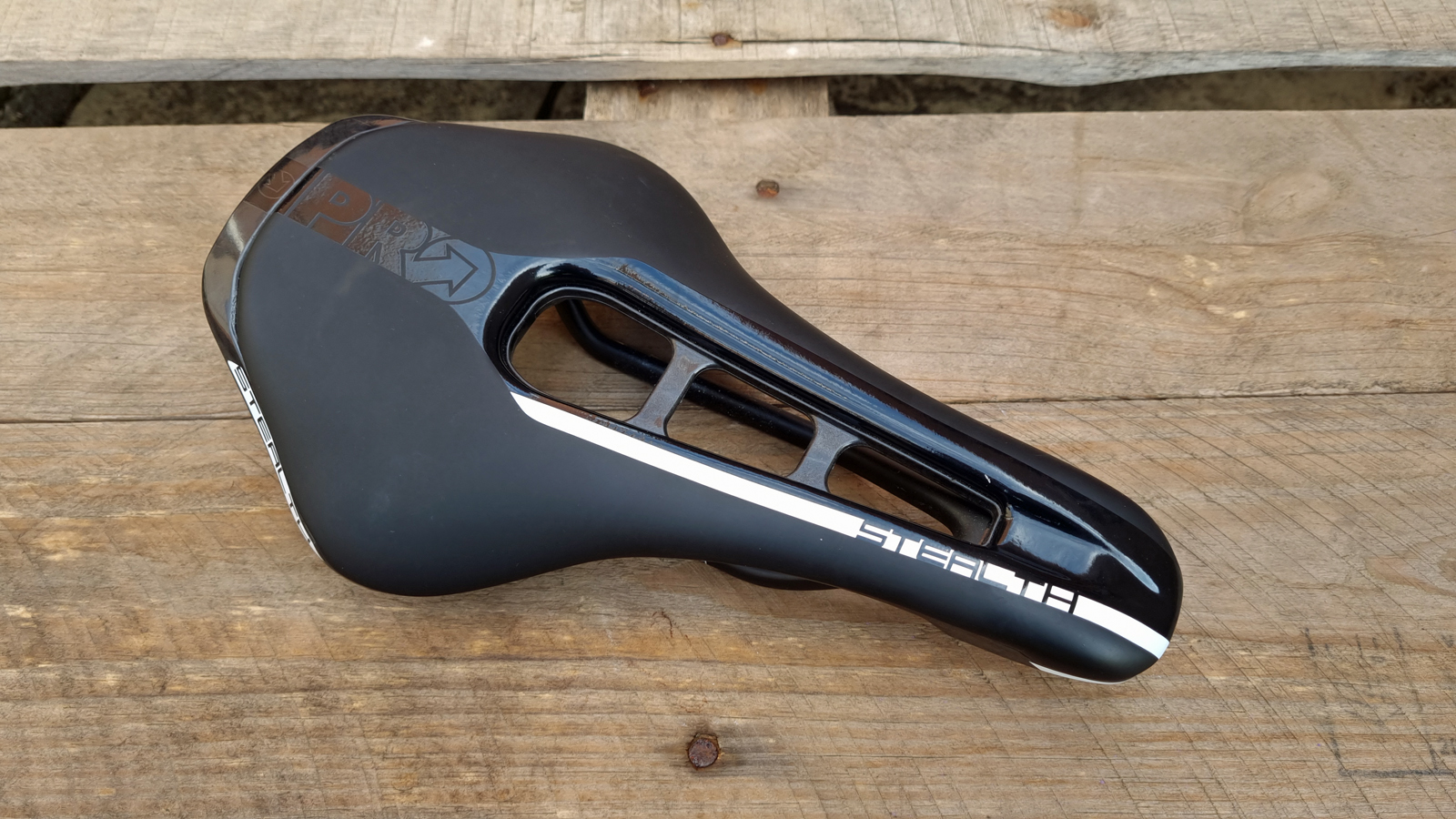
Specifications
Reasons to buy
Reasons to avoid
✅ You ride across disciplines: Originally a TT saddle, but performs well on road and mountain bikes alike
✅ You prefer a short, wide saddle for an aggressive position: Designed for a low, aero posture with a broad nose and rear for support.
❌ You like to shift around during rides: Limited space to move makes it less ideal for riders who frequently change position.
Shimano’s PRO Stealth is a solid performer in the short-nose saddle category and remains a great option for riders chasing an aggressive, aero position on the bike.
In testing, we immediately noticed the huge cut-out in the centre, which measures 130mm in length and 35mm at its widest point. This sizeable channel is designed to alleviate pressure on the perineum while seated and pedalling. In terms of design, it's unisex design and we think it's a great contender for best women's road bike saddles despite not being a women-specific design. At 173g, it’s very lightweight, while the stiffness of the carbon-reinforced base feels super stable while you’re laying down the power
We think this is a solid option for experienced road riders who are used to using firmer saddles, especially those looking to get into racing and wanting to update their road bike setup to save some weight and wasted watts. Plus, it comesPro’s 30-day fit guarantee—so you can try and test with peace of mind.
Read our full Pro Stealth Carbon Saddle for more details.
How to choose
What saddle shape do I need?
Some saddles have a flat top, others a curve from front to back, but which one is right for you? Well, as a rule of thumb flat or flatter saddles are favoured by riders who ride a little more upright and tend to shift fore and aft in the saddle, as it gives a more consistent feeling.
More flexible riders, or those with a very low, racing position tend to favour a waved saddle, as it gives them a feeling of being 'locked in' to their position.
Short nose saddles are becoming increasingly popular nowadays too, especially for those less flexible. The shorter, wider nose provides more support without getting in the way in all the wrong places while riding 'on the rivet'.
Some brands offer women's specific saddle shapes, but don't let these put you in a box - some men prefer to ride women's saddles and vice versa - if it's comfy that's the main thing. If you're curious about women's saddles then we have a guide to the best women's road bike saddles too.
Do saddle cutouts work?
Saddle cutouts, relief channels, or any other name for a hole in the middle of the saddle... whatever you want to call them, they can provide some benefit to some riders, but they're no silver bullet. a poor saddle fit with a cutout will be less comfy than a good fitting saddle without one.
If you do struggle with numbness or soreness in the soft tissue contact areas then they might be one to try.
Are padded bike saddles good?
Some padding is a good thing on a saddle, unless you're just doing a hill climb or riding buttery-smooth roads. Too much padding though and your sit bones will squish into the saddle and mean the surrounding area, not designed to carry your body weight, begins to bear too much load. While perhaps not an issue for shorter rides, on longer ones it will lead to some discomfort, so steer clear of great thicknesses of gel.
Is there anything else I need to know?
Carbon rails will save you a few grams, but they may not always be compatible with your seatclamp, so make sure to check. Carbon shells will save you a couple of grams over a plastic shell, but always prioritise comfort over weight in this case.
All saddles also vary in height as well as width, so make sure to adjust your saddle height accordingly when swapping between models.
Most saddles are covered in synthetic leather nowadays, but if you're vegan, or avoid leather for any reason then make sure to check as some older brands still use animal leather.
How we test the best road bike saddles
For this guide, we tested a total of 9 different road bike saddles. Obviously, the best saddle ultimately depends on your individual body type and preferences. With this in mind, we tested each saddle across different members of the Cyclingnews team. Furthermore, we tested on both long-distance and shorter rides to give an accurate representation of comfort and performance in different cycling contexts.
Testing saddles involves positioning and riding. Positioning is somewhat unique to your preferences as a rider where as riding takes into consider how well the saddle distributes pressure across your backside. Testing is the backbone of the tech department at Cyclingnews and we take it seriously. To find out more, check out how we test here.
The latest race content, interviews, features, reviews and expert buying guides, direct to your inbox!

Will joined the Cyclingnews team as a reviews writer in 2022, having previously written for Cyclist, BikeRadar and Advntr. He’s tried his hand at most cycling disciplines, from the standard mix of road, gravel, and mountain bike, to the more unusual like bike polo and tracklocross. He’s made his own bike frames, covered tech news from the biggest races on the planet, and published countless premium galleries thanks to his excellent photographic eye. Also, given he doesn’t ever ride indoors he’s become a real expert on foul-weather riding gear. His collection of bikes is a real smorgasbord, with everything from vintage-style steel tourers through to superlight flat bar hill climb machines.